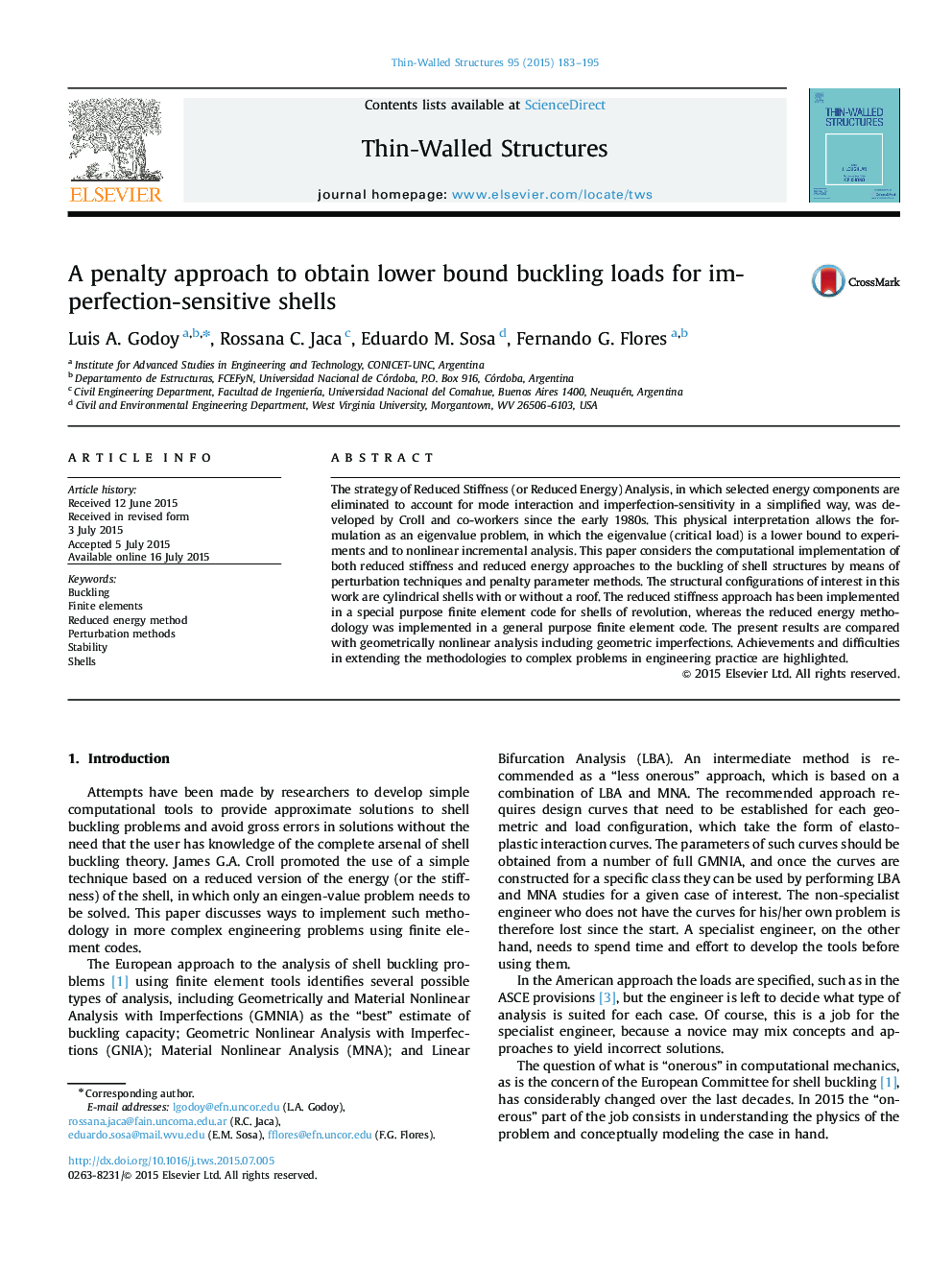| Article ID | Journal | Published Year | Pages | File Type |
|---|---|---|---|---|
| 308694 | Thin-Walled Structures | 2015 | 13 Pages |
•Imperfection-sensitivity of shells is treated by a lower bound reduced energy/stiffness method.•A perturbation expansion is presented as the theoretical basis of lower bound approaches.•The lower bound methodologies are implemented in finite element models.•Results indicate that reduced stiffness methods have better performance than reduced energy methods.•There are limitations in the correct evaluation of buckling modes in complex problems.
The strategy of Reduced Stiffness (or Reduced Energy) Analysis, in which selected energy components are eliminated to account for mode interaction and imperfection-sensitivity in a simplified way, was developed by Croll and co-workers since the early 1980s. This physical interpretation allows the formulation as an eigenvalue problem, in which the eigenvalue (critical load) is a lower bound to experiments and to nonlinear incremental analysis. This paper considers the computational implementation of both reduced stiffness and reduced energy approaches to the buckling of shell structures by means of perturbation techniques and penalty parameter methods. The structural configurations of interest in this work are cylindrical shells with or without a roof. The reduced stiffness approach has been implemented in a special purpose finite element code for shells of revolution, whereas the reduced energy methodology was implemented in a general purpose finite element code. The present results are compared with geometrically nonlinear analysis including geometric imperfections. Achievements and difficulties in extending the methodologies to complex problems in engineering practice are highlighted.
